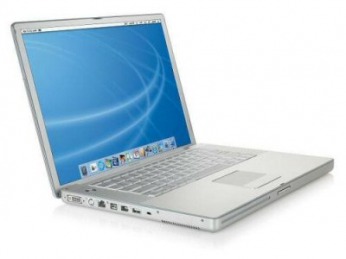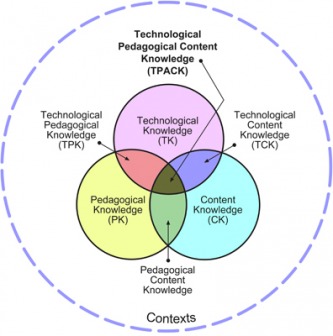A Web Based Grant Proposal . . .
Putting My Cards on the Table . . .
Context

I teach all subjects to 4th graders at Red Cedar Elementary School in East Lansing, Michigan. My school is located across the street from Michigan State University. With most of the parents attending or teaching at MSU, the student population is extremely diverse (last year we serviced children from 56 different countries speaking 39 different languages). In our school, we service general education students, English Language Learners (ELL), and cognitively impaired students, as well as being a Title I building. Since most of our families live on campus, we are fortunate to do most of our communication electronically. In the past, I have used digital newsletters and email, but I would like to broaden my horizons this year and make the communication more interactive with the students and parents.
While our school maintains a very positive and accepting tone, many families are not comfortable entering the school because they are not confident in their English speaking abilities. In addition, many families live apart. That means that one parent is in East Lansing while the other parent lives in the student's home country. I want to alleviate these parents' concerns by creating a warm and inviting classroom environment that can be entered from anywhere in the world. Punya Mishra stated that "digital convergence, in an important sense, removes, and maybe more importantly, obscured, physical and temporal boundaries that in the past served as impediments between individuals and the world." I hope by bringing our classroom to parents online with the use of individual laptops, those boundaries will be transparent and parents will be more willing and excited to participate in their child's education at home and at school.
While our school maintains a very positive and accepting tone, many families are not comfortable entering the school because they are not confident in their English speaking abilities. In addition, many families live apart. That means that one parent is in East Lansing while the other parent lives in the student's home country. I want to alleviate these parents' concerns by creating a warm and inviting classroom environment that can be entered from anywhere in the world. Punya Mishra stated that "digital convergence, in an important sense, removes, and maybe more importantly, obscured, physical and temporal boundaries that in the past served as impediments between individuals and the world." I hope by bringing our classroom to parents online with the use of individual laptops, those boundaries will be transparent and parents will be more willing and excited to participate in their child's education at home and at school.
Content

Some students have the misconception that what they do at school stays at school. I want to change that thinking so they realize that their parents are a part of their educational journey. I want my students to learn that their parents can be a part of their education, that they can publish their writing in other ways than just with paper and a pencil, and that they can have fun while creating a finished product. Karen Worth says that "Children need experiences in both formal and informal settings. We can give them information, demonstrations, books, and step-by-step experiments, but these cannot replace the kinds of experiences they need to develop tenacious and deep understanding." I could have my students come to the carpet, and we could have a heart-to-heart about how important it is to share their school work with their parents. We could also talk until we're blue in the face about how to write effectively. However, it is more relevant to have the children learn by doing. By blogging on a regular basis, writing is being published online for all to see. When other people, besides the teacher, can read the children's thoughts, feelings, and summaries, there is a sense of ownership and pride.
Some possible distractions to this plan could be that the students get more focused on using the technology than completing the assigned task. Also, many students do not speak English and will have a hard time with vocabulary related to content and computers. To combat this, I will have to explicitly teach how to use the programs with embedded vocabulary, set expectations for assignments and a timer for completion, and explain that we are not using technology for the sake of using it. It is a means to publish works, just like paper and pencil. With this instruction, I hope that students will use the laptops by "doing" as a means to deeper understanding.
Some possible distractions to this plan could be that the students get more focused on using the technology than completing the assigned task. Also, many students do not speak English and will have a hard time with vocabulary related to content and computers. To combat this, I will have to explicitly teach how to use the programs with embedded vocabulary, set expectations for assignments and a timer for completion, and explain that we are not using technology for the sake of using it. It is a means to publish works, just like paper and pencil. With this instruction, I hope that students will use the laptops by "doing" as a means to deeper understanding.
Technology

With the variety of learning needs in my building, it is very important to use the technology that is available as visual aids for vocabulary and motivators for learning. I currently have an interactive whiteboard, document camera, MP3 listening station, one teacher computer, 2 Netbooks, and Soundfield System. While these items are great for student use, they do not lend themselves to home-school communication.
In the past, I have used digital newsletters, email, phone calls, and conferences for communication. While these systems are great, they tend to be more of a report of activities, academics, and behavioral concerns. In addition, they are teacher-led and created. I would like to have communication with parents that is led by students. I envision students taking notes and pictures of activities from the week and writing online about their experiences at their own writing level. We would set up our classroom Ning so it encourages content from the students, comments that will be filtered by the teacher, and collaboration from parents. The teacher's role would be a facilitator and guide. I would not completely abandon my previous avenues for communication. Instead, I would use them in conjunction with the laptops to create a more inclusive classroom environment.
In the past, I have used digital newsletters, email, phone calls, and conferences for communication. While these systems are great, they tend to be more of a report of activities, academics, and behavioral concerns. In addition, they are teacher-led and created. I would like to have communication with parents that is led by students. I envision students taking notes and pictures of activities from the week and writing online about their experiences at their own writing level. We would set up our classroom Ning so it encourages content from the students, comments that will be filtered by the teacher, and collaboration from parents. The teacher's role would be a facilitator and guide. I would not completely abandon my previous avenues for communication. Instead, I would use them in conjunction with the laptops to create a more inclusive classroom environment.
Pedagogy

Given my choice of content and technology, the teaching style that fits best into my philosophy is the Cognitivist approach. One of the pioneering cognitive educational psychologists, David Ausubel, states that "the most important single factor influencing learning is what the learner already knows. Ascertain this and teach him accordingly." I am aware that my students have preconceived notions about how to write, what tools should be used for writing, when their parents are involved in school work, and how to use a computer. I want to build on those understandings by modeling how to write in an authentic way with a real audience. This means that I must first understand what they know and be willing to teach from there.
In the past, I have found that merely using technology was very motivational for the children in my classroom. When I turn on the interactive whiteboard, use the document camera, turn on the microphone, or take the kids to the computer lab, their interest and motivation is peeked. According to Jere Brophy (1987)”…motivation to learn is a competence acquired through general experience but stimulated most directly through modeling, communication of expectations, and direct instruction or socialization by significant others (especially parents and teacher).” I can only imagine what would happen if these same kids that were motivated by my modeling each had their own laptop where they could interact.
Rather than just being motivated by using the technology or by getting a grade, my students would also be intrinsically motivated because of the process of publishing on the web. When others see your work and depend on your contributions, you feel a sense of accountability. In most people, that sense leads to greater motivation. "Relevance also promotes motivation, as does "contextualizing" learning, that is, helping students to see how skills can be applied in the real world (Lepper). By having students blog, I am teaching them that they are not just writing as an exercise. Instead, they are writing to a real audience that is reading their work because they are interested in what is happening in their lives.
In the past, I have found that merely using technology was very motivational for the children in my classroom. When I turn on the interactive whiteboard, use the document camera, turn on the microphone, or take the kids to the computer lab, their interest and motivation is peeked. According to Jere Brophy (1987)”…motivation to learn is a competence acquired through general experience but stimulated most directly through modeling, communication of expectations, and direct instruction or socialization by significant others (especially parents and teacher).” I can only imagine what would happen if these same kids that were motivated by my modeling each had their own laptop where they could interact.
Rather than just being motivated by using the technology or by getting a grade, my students would also be intrinsically motivated because of the process of publishing on the web. When others see your work and depend on your contributions, you feel a sense of accountability. In most people, that sense leads to greater motivation. "Relevance also promotes motivation, as does "contextualizing" learning, that is, helping students to see how skills can be applied in the real world (Lepper). By having students blog, I am teaching them that they are not just writing as an exercise. Instead, they are writing to a real audience that is reading their work because they are interested in what is happening in their lives.
The Total PACKage
By using the TPACK model, I am agreeing to equally weigh Technology, Pedagogy, and Content Knowledge while considering the context of my classroom. As I think about how to put together the whole PACKage, I think about how "knowledge of technology, content, and pedagogy does not exist in a vacuum; it exists and functions within specific contexts" (Mishra). I will not just use the laptops for the sake of using them. Instead, my class will use the technology available to support the way I teach the content to my students.
Students will use the laptops to creatively put our thoughts into blog form. They will use a classroom Ning to share their thoughts, feelings, and ideas with other members of the class and their parents. By doing this, we are transforming the way we usually write (with pencil and paper) and making home-school communication interactive rather than teacher-directed. Adding keyboarding, images, and socialization also makes the writing more authentic and creative. In addition, as students gain a greater understanding of blogging for communication, they will be able to choose a variety of programs to get their ideas across to the audience. Some examples they could use are Blabberize, Photo Story, and Movie Maker with the additional use of flip cameras and digital cameras. By allowing students to choose their means for inquiry and publication, I am using a trans-disciplinary approach. This "knowledge helps students move beyond looking for one “correct” solution, towards an approach that integrates different solutions, viewpoints, or perspectives."
Students will use the laptops to creatively put our thoughts into blog form. They will use a classroom Ning to share their thoughts, feelings, and ideas with other members of the class and their parents. By doing this, we are transforming the way we usually write (with pencil and paper) and making home-school communication interactive rather than teacher-directed. Adding keyboarding, images, and socialization also makes the writing more authentic and creative. In addition, as students gain a greater understanding of blogging for communication, they will be able to choose a variety of programs to get their ideas across to the audience. Some examples they could use are Blabberize, Photo Story, and Movie Maker with the additional use of flip cameras and digital cameras. By allowing students to choose their means for inquiry and publication, I am using a trans-disciplinary approach. This "knowledge helps students move beyond looking for one “correct” solution, towards an approach that integrates different solutions, viewpoints, or perspectives."

